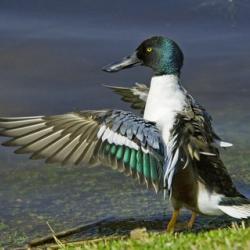Source Institutions
Source Institutions
Add to list Go to activity
Activity link broken? See if it's at the internet archive

In this activity, learners will investigate how shorebirds and seabirds are extremely vulnerable to changes in their environment, whether human-induced or otherwise. Learners will use data collected in the Great Backyard Bird Count (GBBC) conducted by the Audubon Society and the Cornell Lab of Ornithology to calculate the population size of a shorebird or seabird in their state and throughout the US. Learners will compare findings, consider factors for population changes, and discuss the accuracy of the GBBC data.
- Under 5 minutes
- 1 to 2 hours
- free per student
- Ages 14 - 18
- Activity, Lesson/Lesson Plan
- English
Quick Guide
Materials List (per student)
- Computer to access Detailed Report DATA and other links
- Paper and pencil
Subjects
-
Life Sciences
-
Diversity of Life
- Animals
-
Ecology
- Ecosystems
- Populations
- Human Impact
-
Diversity of Life
-
Mathematics
-
Data Analysis and Probability
- Data Analysis
- Data Collection
- Data Representation
- Number and Operations
-
Data Analysis and Probability
-
The Nature of Science
-
Science and Society
- Public Policy
-
The Scientific Process
- Gathering Data
- Formulating Explanations
-
Science and Society
-
The Nature of Technology
-
Technology and Society
- Technology and the Environment
-
Technology and Society
Informal Categories
- Animals
- Citizen Science
- Nature and Environment
Audience
To use this activity, learners need to:
- see
- see color
- read
- use keyboard
- use mouse
- touch
Learning styles supported:
- Uses STEM to solve real-world problems
- Involves hands-on or lab activities
Other
Components that are part of this resource:
Includes alignment to state and/or national standards:
This resource is part of:
Access Rights:
- Free access
By:
- Rose, Laura
Rights:
Funding Sources:
- NOAA Sea Grant
- National Marine Educators Association
